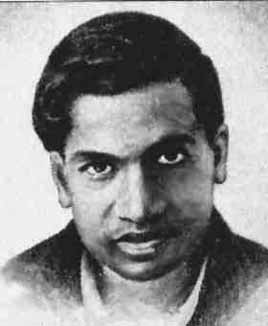Science & Technology
Srinivasa Ramanujan
- 22 Dec 2020
- 3 min read
Why in News
Every year, Srinivasa Ramanujan’s birth anniversary on December 22 is commemorated as National Mathematics Day.
Key Points
- About Srinivasa Ramanujan:

- Born on 22nd December, 1887 in Erode,Tamil Nadu and died on 26th April 1920 in Kumbakonam, Tamil Nadu, India.
- In 1903 he secured a scholarship to the University of Madras but lost it the following year because he neglected all other subjects in pursuit of mathematics.
- In 1911 Ramanujan published the first of his papers in the Journal of the Indian Mathematical Society.
- In 1913 he began a correspondence with the British mathematician Godfrey H. Hardy which led to a special scholarship from the University of Madras and a grant from Trinity College, Cambridge.
- In 1918 he was elected to the Royal Society of London.
- Ramanujan was one of the youngest members of Britain's Royal Society and the first Indian to be elected a Fellow of Trinity College, Cambridge University.
- Contributions to Mathematics:
- Formulas and Equations:
- Ramanujan compiled around 3,900 results consisting of equations and identities. One of his most treasured findings was his infinite series for Pi.
- He gave several formulas to calculate the digits of Pi in many unconventional ways.
- Game Theory:
- He discovered a long list of new ideas to solve many challenging mathematical problems, which gave a significant impetus to the development of game theory.
- His contribution to game theory is purely based on intuition and natural talent and remains unrivalled to this day.
- Ramanujan’s Book:
- One of Ramanujan’s notebooks was discovered by George Andrews in 1976 in the library at Trinity College. Later the contents of this notebook were published as a book.
- Ramanujan number:
- 1729 is known as the Ramanujan number.
- It is the smallest number which can be expressed as the sum of two different cubes in two different ways.
- 1729 is the sum of the cubes of 10 and 9 - cube of 10 is 1000 and cube of 9 is 729 adding the two numbers results in 1729.
- 1729 is also the sum of the cubes of 12 and 1, cube of 12 is 1728 and cube of 1 is 1 adding the two results in 1729.
- Other Contributions: Ramanujan’s other notable contributions include hypergeometric series, the Riemann series, the elliptic integrals, mock theta function, the theory of divergent series, and the functional equations of the zeta function.
- Formulas and Equations:






